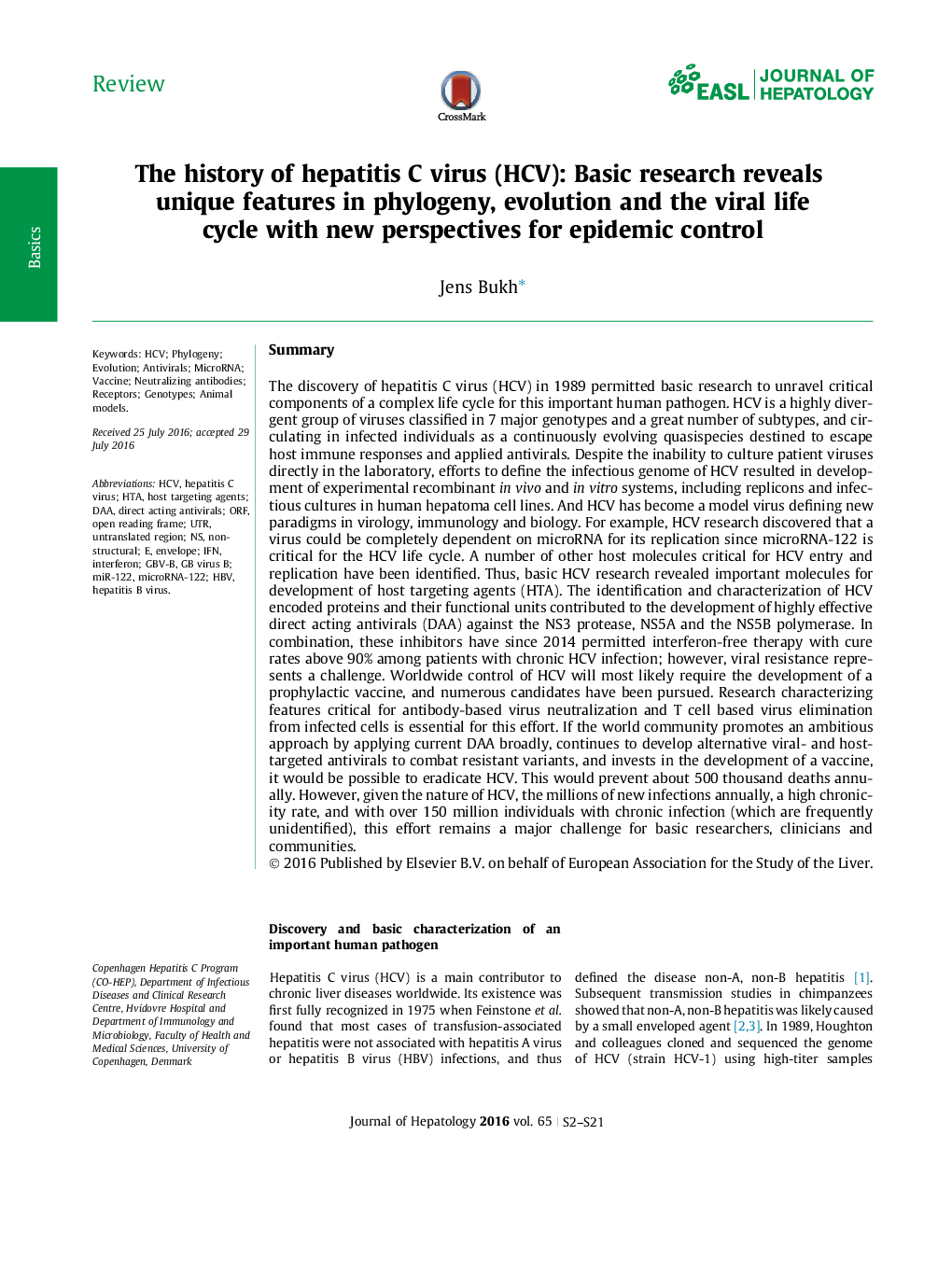| کد مقاله | کد نشریه | سال انتشار | مقاله انگلیسی | نسخه تمام متن |
|---|---|---|---|---|
| 3313604 | 1211108 | 2016 | 20 صفحه PDF | دانلود رایگان |

SummaryThe discovery of hepatitis C virus (HCV) in 1989 permitted basic research to unravel critical components of a complex life cycle for this important human pathogen. HCV is a highly divergent group of viruses classified in 7 major genotypes and a great number of subtypes, and circulating in infected individuals as a continuously evolving quasispecies destined to escape host immune responses and applied antivirals. Despite the inability to culture patient viruses directly in the laboratory, efforts to define the infectious genome of HCV resulted in development of experimental recombinant in vivo and in vitro systems, including replicons and infectious cultures in human hepatoma cell lines. And HCV has become a model virus defining new paradigms in virology, immunology and biology. For example, HCV research discovered that a virus could be completely dependent on microRNA for its replication since microRNA-122 is critical for the HCV life cycle. A number of other host molecules critical for HCV entry and replication have been identified. Thus, basic HCV research revealed important molecules for development of host targeting agents (HTA). The identification and characterization of HCV encoded proteins and their functional units contributed to the development of highly effective direct acting antivirals (DAA) against the NS3 protease, NS5A and the NS5B polymerase. In combination, these inhibitors have since 2014 permitted interferon-free therapy with cure rates above 90% among patients with chronic HCV infection; however, viral resistance represents a challenge. Worldwide control of HCV will most likely require the development of a prophylactic vaccine, and numerous candidates have been pursued. Research characterizing features critical for antibody-based virus neutralization and T cell based virus elimination from infected cells is essential for this effort. If the world community promotes an ambitious approach by applying current DAA broadly, continues to develop alternative viral- and host- targeted antivirals to combat resistant variants, and invests in the development of a vaccine, it would be possible to eradicate HCV. This would prevent about 500 thousand deaths annually. However, given the nature of HCV, the millions of new infections annually, a high chronicity rate, and with over 150 million individuals with chronic infection (which are frequently unidentified), this effort remains a major challenge for basic researchers, clinicians and communities.
Journal: Journal of Hepatology - Volume 65, Issue 1, Supplement, October 2016, Pages S2–S21